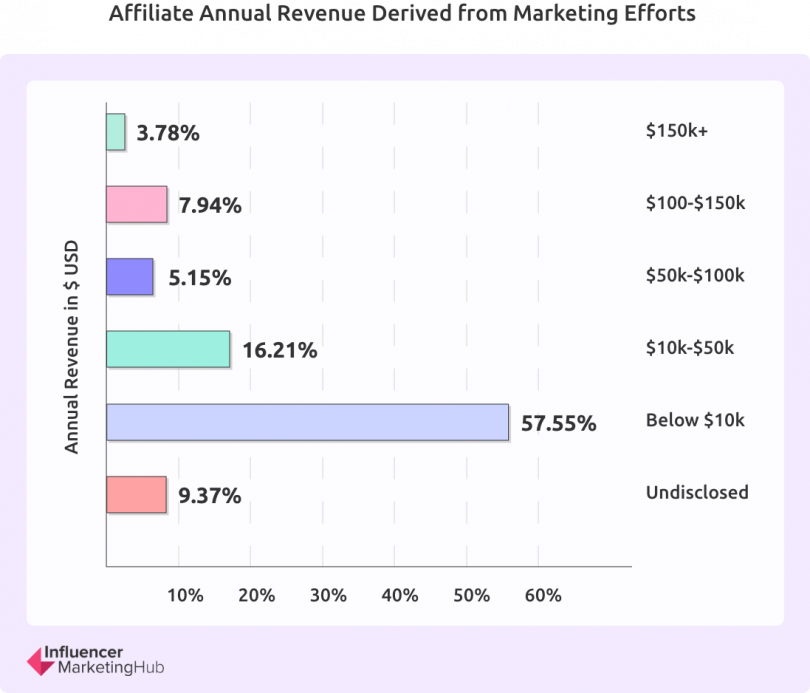Are you curious about whether it’s possible to make 00 a month with affiliate marketing? In this article, we will explore the potential of affiliate marketing and discuss strategies that can help you achieve that income goal. You will learn about the basics of affiliate marketing, how to choose the right niche, and the importance of building a strong online presence. By the end of this article, you will have a clearer understanding of the steps you can take to potentially earn $1000 a month through affiliate marketing.

What is Affiliate Marketing?
Affiliate marketing is a type of online marketing where individuals or businesses earn a commission by promoting other people’s products or services. It is a performance-based marketing model, where affiliates are rewarded for each sale, click, or lead generated through their marketing efforts.
Definition of Affiliate Marketing
Affiliate marketing is a partnership between a merchant (the product creator or seller) and an affiliate (the marketer). The affiliate promotes the merchant’s products or services using unique affiliate links, and when a customer makes a purchase through that link, the affiliate earns a commission. This commission can vary depending on the agreement between the merchant and the affiliate.
How Affiliate Marketing Works
The process of affiliate marketing involves a few key players: the merchant, the affiliate, and the customer. Here’s how it works:
- The affiliate signs up for an affiliate program, either directly with the merchant or through an affiliate network.
- The affiliate receives a unique affiliate link, which they can use to promote the merchant’s products or services.
- The affiliate creates content or marketing materials to promote the products or services, using their affiliate link.
- Customers who click on the affiliate link are directed to the merchant’s website, where they can make a purchase.
- If the customer makes a purchase, the affiliate is credited with a commission for referring the sale.
- The affiliate receives payment from the merchant, either on a regular schedule or when they reach a specific earnings threshold.
Affiliate marketing provides a win-win situation for both the merchant and the affiliate. The merchant gets increased exposure and sales through the efforts of the affiliate, while the affiliate earns a commission for their marketing efforts.
Earning Potential in Affiliate Marketing
Affiliate marketing has the potential to be a lucrative source of income, but the earning potential varies depending on several factors.
Factors Affecting Affiliate Earnings
-
Commission Rate: The commission rate offered by the merchant can greatly impact an affiliate’s earnings. Higher commission rates mean more money earned per sale.
-
Average Order Value: The average order value (AOV) is the average amount spent by customers when making a purchase. Affiliates can earn more when promoting products or services with a higher AOV.
-
Conversion Rate: The conversion rate is the percentage of website visitors who make a purchase. Affiliates who are able to drive highly targeted traffic that converts into sales can earn more.
-
Volume of Sales: The number of sales generated through an affiliate’s marketing efforts also impacts their earnings. The more sales an affiliate can generate, the more money they can make.
Average Earnings in Affiliate Marketing
The average earnings in affiliate marketing can vary significantly depending on the niche, the affiliate’s marketing strategies, and the effort put into the business. Some affiliates may earn only a few hundred dollars per month, while others can earn thousands or even millions of dollars.
It’s important to note that affiliate marketing is not a get-rich-quick scheme. It requires hard work, dedication, and ongoing learning to build a successful affiliate business. However, with the right strategies and a commitment to success, individuals can earn a substantial income through affiliate marketing.
Choosing the Right Niche
Choosing the right niche is crucial for success in affiliate marketing. A niche is a specific segment of a market, and focusing on a niche allows affiliates to target a specific audience and become an authority in that area.
Identifying Profitable Niches
When choosing a niche, it’s important to consider the following factors:
-
Market Demand: Is there a demand for products or services in the niche? Conduct market research to ensure there is a viable market for the niche you’re considering.
-
Competition: Evaluate the level of competition in the niche. Too much competition may make it difficult to stand out, while too little competition may indicate a lack of demand.
-
Commission Potential: Assess the commission potential in the niche. Are there affiliate programs with attractive commission rates? High-ticket items often offer higher commissions.
-
Personal Interest: Choose a niche that you have an interest in or knowledge about. Passion for the niche will make it easier to create high-quality content and engage with your audience.
Researching Niche Competition
Once you’ve identified a potential niche, it’s important to research the competition in that niche. This will help you understand what other affiliates are doing and how you can differentiate yourself.
-
Study Competitor Websites: Look at the websites of other affiliates in the niche. Pay attention to the content they create, the products they promote, and the strategies they use.
-
Analyze Competitor Keywords: Use keyword research tools to identify the keywords and phrases your competitors are targeting. This will help you understand what topics are popular in the niche.
-
Assess Competitor Social Media Presence: Look at how other affiliates are engaging with their audience on social media platforms. Take note of their posting frequency, content types, and engagement levels.
By researching the competition, you can gain valuable insights and identify opportunities to differentiate yourself in the niche.
Finding Affiliate Programs
To start earning money with affiliate marketing, you need to find affiliate programs that align with your niche and audience. There are two main types of affiliate programs: popular affiliate networks and direct affiliate programs.
Popular Affiliate Networks
Affiliate networks act as intermediaries between affiliates and merchants. They provide a platform where affiliates can find a wide range of products or services to promote. Some popular affiliate networks include:
-
Amazon Associates: Amazon’s affiliate program offers a vast range of products to promote, making it a popular choice for many affiliates.
-
Commission Junction: Commission Junction (CJ) is one of the largest affiliate networks, offering a variety of products and services to promote.
-
ShareASale: ShareASale is another popular affiliate network that features a diverse range of merchants and products.
-
ClickBank: ClickBank is a platform that specializes in digital products, such as e-books, online courses, and software.
When joining an affiliate network, you’ll need to create an account, provide some information about your website or marketing strategies, and agree to their terms and conditions.
Direct Affiliate Programs
Some merchants have their own affiliate programs, which are not managed through affiliate networks. These direct affiliate programs often offer higher commission rates and more personalized support.
To find direct affiliate programs, you can:
-
Research Specific Brands or Companies: Visit the websites of brands or companies you’re interested in promoting and look for a “Affiliate” or “Partner” program link in the footer or header of the website.
-
Google Search: Use search engines to find affiliate programs in your niche. For example, search for “fitness affiliate programs” if you’re in the fitness niche.
-
Industry Associations: Some industry associations have affiliate programs for their members. Check if any associations relevant to your niche offer affiliate partnerships.
When joining a direct affiliate program, you typically need to complete an application and wait for approval from the merchant. Upon approval, you’ll receive your unique affiliate links and can start promoting the merchant’s products or services.

Creating High-Quality Content
High-quality content is essential for affiliate success. Content can include blog posts, articles, videos, podcasts, social media posts, and more. Here’s why quality content matters:
Importance of Quality Content
-
Builds Trust and Credibility: Well-written and informative content helps build trust with your audience. When your audience trusts you, they are more likely to make purchases based on your recommendations.
-
Drives Organic Traffic: Quality content that is optimized for search engines can help drive organic traffic to your website. This increases the likelihood of conversions and affiliate earnings.
-
Provides Value to Your Audience: Content that provides value to your audience by solving their problems or answering their questions increases engagement and loyalty.
Types of Content for Affiliate Marketing
There are various types of content that affiliates can create to promote their affiliate products or services:
-
Product Reviews: In-depth reviews of products or services, highlighting their features, benefits, and drawbacks.
-
Tutorials and Guides: Step-by-step tutorials or guides that teach your audience how to use a product or achieve a specific outcome.
-
Comparison Articles: Articles that compare different products or services within a niche, helping your audience make informed decisions.
-
Case Studies: Real-life examples of how a product or service has helped solve a problem or achieve a desired result.
-
How-to Videos: Videos that demonstrate how to use a product or perform a specific task related to your niche.
-
Social Media Influencer: Collaborating with influencers to promote products or services through their social media channels.
It’s important to tailor your content to your audience’s preferences and needs. Experiment with different types of content and analyze the results to determine what works best for your niche and audience.
Building an Engaged Audience
Building an engaged audience is key to the success of your affiliate marketing efforts. An engaged audience is more likely to trust your recommendations and make purchases through your affiliate links. Here are two effective strategies for building an engaged audience:
Utilizing Social Media
Social media platforms can be powerful tools for reaching and engaging with your target audience. Here’s how you can utilize social media for affiliate marketing:
-
Choose the Right Platforms: Identify the social media platforms that are most popular among your target audience. Focus your efforts on those platforms to maximize your impact.
-
Share Valuable Content: Create and share content that provides value to your audience. This can include informative blog posts, engaging videos, or eye-catching visuals.
-
Engage with Your Audience: Respond to comments, messages, and mentions from your followers. Engage in conversations and build relationships with your audience to foster trust and loyalty.
-
Educate and Entertain: Use social media to educate your audience about the benefits of the products or services you’re promoting. Also, entertain them with relevant and engaging content.
-
Utilize Influencer Marketing: Collaborate with influencers in your niche to reach a larger audience and build credibility. Influencers can help promote your content and expand your reach.
Email Marketing Strategies
Email marketing is another effective way to build and nurture relationships with your audience. Here are some strategies for successful email marketing in affiliate marketing:
-
Build an Email List: Offer incentives such as a free e-book, discounted products, or exclusive content to encourage visitors to subscribe to your email list.
-
Provide Value in Every Email: When sending emails, make sure to provide valuable content, such as tips, insights, or exclusive offers. Avoid constantly bombarding your subscribers with promotional content.
-
Segment Your List: Divide your email list into segments based on interests, purchasing behavior, or other criteria. This allows you to send targeted and personalized emails to specific groups.
-
Use Compelling Subject Lines: Craft attention-grabbing subject lines to increase open rates. Experiment with different subject lines and analyze the results to find what works best for your audience.
-
Include Call-to-Actions (CTAs): Include clear and compelling CTAs in your emails that encourage subscribers to click on your affiliate links or make a purchase.
Building an engaged audience takes time and effort, but the rewards can be significant. By consistently providing value and engaging with your audience, you can establish yourself as a trusted authority in your niche and increase your affiliate earnings.

Optimizing Affiliate Links
Optimizing your affiliate links can help increase conversions and maximize your affiliate earnings. Here are some strategies for effective link placement:
Strategies for Link Placement
-
Contextual Links: Integrate your affiliate links naturally within your content. Use anchor text that is relevant to the product or service you’re promoting. This encourages clicks and maximizes conversions.
-
Call-to-Action Buttons: Use visually appealing call-to-action buttons that clearly indicate what action you want your audience to take. Place these buttons strategically within your content to drive clicks.
-
Product Images: Embed your affiliate links within product images. Make sure the images are visually appealing and relevant to your content.
-
Comparison Tables: If you’re creating comparison articles, include affiliate links within comparison tables to make it easy for your audience to click and make a purchase.
-
Banners and Sidebar Promotions: Place banners or sidebar promotions on your website or blog to draw attention to your affiliate products or services. Make sure these placements are visually appealing and highly visible.
Tracking and Analyzing Link Performance
To optimize your affiliate links and understand how they are performing, it’s important to track and analyze their performance. Here are some ways to track and analyze link performance:
-
Use URL Shorteners: Use URL shorteners like Bitly or Pretty Links to create trackable links. These tools provide analytics that show you the number of clicks and conversions generated by each link.
-
Set Up Conversion Tracking: If the affiliate program or network you’re using supports it, set up conversion tracking. This helps you understand which links or marketing channels are generating the most conversions.
-
Analyze Website Analytics: Use website analytics tools like Google Analytics to monitor overall traffic, referral sources, and conversion rates. This provides insights into the effectiveness of your content and marketing efforts.
By tracking and analyzing link performance, you can identify areas for improvement, optimize your efforts, and increase your affiliate earnings.
Driving Traffic to Your Affiliate Links
Driving traffic to your affiliate links is crucial for generating conversions and earning affiliate commissions. Here are two effective strategies for driving traffic:
Search Engine Optimization
Search engine optimization (SEO) involves optimizing your content to rank higher in search engine results pages (SERPs). Here are some key strategies for SEO:
-
Keyword Research: Identify relevant keywords and phrases that your target audience is searching for. Use keyword research tools to find keywords with high search volume and low competition.
-
On-Page Optimization: Optimize your content by including target keywords in your titles, headings, meta descriptions, and throughout your content. Make sure your content is well-structured and easy to read.
-
Quality Backlinks: Build high-quality backlinks from reputable websites within your niche. This helps improve your website’s authority and visibility in search engine rankings.
-
Mobile Optimization: More and more people are using mobile devices to browse the internet. Ensure that your website is mobile-friendly, as this can affect your rankings in mobile search results.
-
User Experience: Provide a positive user experience by ensuring fast loading times, easy navigation, and relevant content. User-friendly websites tend to rank higher in search results.
Paid Advertising Methods
Paid advertising can also be an effective way to drive targeted traffic to your affiliate links. Here are a few popular paid advertising methods:
-
Pay-Per-Click (PPC) Advertising: Set up PPC campaigns on search engines like Google or Bing. With PPC, you pay for each click on your ad, and your ad appears at the top of search results.
-
Social Media Advertising: Use social media platforms like Facebook, Instagram, or Twitter to create targeted advertisements. These platforms offer a wide range of targeting options to reach your intended audience.
-
Banner Ads: Place banner ads on relevant websites or blogs in your niche. This allows you to reach a specific audience and drive traffic to your affiliate links.
Paid advertising can be an effective strategy for generating immediate traffic to your affiliate links. However, it requires careful planning, monitoring, and optimization to ensure a positive return on investment.

Building Trust and Credibility
Building trust and credibility with your audience is crucial for successful affiliate marketing. When your audience trusts you, they are more likely to follow your recommendations and make purchases through your affiliate links. Here are two strategies for building trust and credibility:
Product Reviews and Recommendations
One effective way to build trust is by providing honest and unbiased product reviews and recommendations. Here’s how you can create trustworthy reviews:
-
Use and Test Products: Before recommending a product, make sure you have personal experience with it. This helps you provide genuine insights and opinions.
-
Highlight Both Pros and Cons: Be transparent and objective in your reviews. Discuss the product’s strengths and weaknesses to give your audience a balanced perspective.
-
Compare Different Options: If there are multiple products within a niche, consider creating comparison reviews. This allows your audience to make informed decisions based on their specific needs.
-
Use Real-Life Examples: Incorporate real-life examples or case studies to showcase how the product or service has helped solve a problem or achieve a desired outcome.
By providing honest and comprehensive product reviews, you can establish yourself as a trusted source of information within your niche.
Transparent Affiliate Disclosures
Being transparent about your affiliate relationships is essential for building trust and maintaining credibility. Here’s how to make clear and transparent affiliate disclosures:
-
Include Disclosure Statements: Clearly disclose your affiliate relationships within your content. This can be done through a short statement at the beginning or end of your content, indicating that you may receive a commission if the reader makes a purchase through your affiliate link.
-
Use Affiliate Disclaimers: Include an affiliate disclaimer page on your website, where you provide detailed information about your affiliate partnerships and how you earn income through affiliate marketing.
-
Follow Legal Requirements: Familiarize yourself with the relevant laws and regulations in your country regarding affiliate disclosures. Ensure that you are in compliance with these regulations and provide proper disclosures.
By being transparent about your affiliate relationships, you build trust with your audience and demonstrate your commitment to their best interests.
Diversifying Income Sources
Diversifying your income sources is a smart strategy in affiliate marketing. Relying solely on one affiliate program or one type of income can be risky. Here are two ways to diversify your income sources:
Exploring Multiple Affiliate Programs
Rather than relying on a single affiliate program, consider joining multiple affiliate programs within your niche. This allows you to promote a wider range of products or services and maximize your income potential.
When choosing affiliate programs, consider the commission rates, the quality of the products or services, the reputation of the merchant, and the support and resources provided to affiliates.
Creating Your Own Digital Products
Creating and selling your own digital products is another way to diversify your income sources. This can include e-books, online courses, membership sites, or software.
Creating your own products allows you to have more control over your earnings and leverage your expertise. You can also offer affiliate programs for your own products, allowing other affiliates to promote and sell them.
Creating your own digital products requires additional time and effort, but it can be highly rewarding and provide long-term passive income.

Staying Updated with Industry Trends
The affiliate marketing industry is constantly evolving, with new trends, technologies, and strategies emerging. Staying updated with industry trends is crucial to stay ahead of the competition and adapt your strategies accordingly. Here are two ways to stay updated:
Following Industry Blogs and News
Follow industry blogs, websites, and publications that provide insights, news, and updates on affiliate marketing. By staying informed about the latest industry trends, you can adapt your strategies and stay ahead of your competitors.
Some popular affiliate marketing blogs and websites include Affiliate Summit, Affiliate Marketing Forum, and Affiliate Marketing Insider.
Networking with Other Affiliate Marketers
Join affiliate marketing communities or forums to connect with other affiliate marketers. Participate in discussions, ask questions, and share your experiences. Networking with other affiliates allows you to learn from their successes and challenges and gain valuable insights.
Some popular affiliate marketing communities and forums include Warrior Forum, Stack That Money, and AffiliateFix.
By staying updated and connected with the affiliate marketing community, you can continually improve your strategies and increase your chances of success.
Tracking and Analyzing Performance
Tracking and analyzing your affiliate marketing performance is crucial for understanding what’s working and what’s not. By monitoring key metrics and using analytics tools, you can optimize your efforts and increase your earnings. Here’s how to track and analyze performance:
Monitoring Clicks and Conversions
Pay attention to the number of clicks generated by your affiliate links and the number of conversions (sales or leads) they generate. This helps you identify which links and marketing channels are driving the most traffic and sales.
Most affiliate programs provide analytics and reporting tools that allow you to track clicks, conversions, and earnings. Use these tools to monitor your performance and identify areas for improvement.
Using Analytics Tools
In addition to affiliate program analytics, you can also utilize website analytics tools to gain a deeper understanding of your performance. Google Analytics is a popular tool that provides detailed insights into your website’s traffic, user behavior, and conversions.
With website analytics, you can track metrics such as traffic sources, bounce rate, average session duration, and conversion rates. This data allows you to identify trends, measure the effectiveness of your marketing efforts, and make data-driven decisions to optimize your affiliate marketing strategy.
Overcoming Challenges and Obstacles
While affiliate marketing offers great potential for earnings, it’s not without its challenges and obstacles. Here are two common challenges and strategies for overcoming them:
Dealing with Affiliate Program Changes
Affiliate programs may change their commission rates, terms, or even close down altogether. To overcome this challenge:
-
Diversify Affiliate Programs: Join multiple affiliate programs in different niches to spread the risk. If one program changes its terms or closes, you still have others to rely on.
-
Stay Informed: Regularly review the terms and conditions of the affiliate programs you’re a part of. Stay updated with any changes or announcements made by the programs.
-
Adapt and Pivot: If an affiliate program makes significant changes that negatively impact your earnings, consider pivoting your strategy and promoting different products or services.
Adapting to Algorithm Updates
Search engine and social media algorithms are constantly changing, which can impact your traffic and visibility. To adapt to algorithm updates:
-
Follow Best Practices: Stay informed about the latest best practices in SEO, social media algorithms, and content marketing. Adapt your strategies to align with these best practices.
-
Diversify Traffic Sources: Relying solely on search engine traffic can be risky. Diversify your traffic sources by leveraging social media, email marketing, paid advertising, and other channels.
-
Monitor and Analyze: Regularly monitor your website’s traffic, rankings, and engagement metrics. Analyze the impact of algorithm updates on your performance and make necessary adjustments to your strategies.
By staying proactive and adaptable, you can overcome challenges and navigate through changes in the affiliate marketing landscape.
Conclusion
Affiliate marketing has the potential to generate significant income for those willing to put in the effort and dedication. By following the strategies outlined in this article, you can increase your chances of earning $1,000 a month or more through affiliate marketing.
Remember, success in affiliate marketing requires continuous learning, adaptation, and staying informed about industry trends. With dedication and perseverance, you can achieve your affiliate marketing goals and enjoy the financial rewards that come with it.
Continue learning, experimenting, and optimizing your strategies to reach new heights of success in the exciting world of affiliate marketing.
